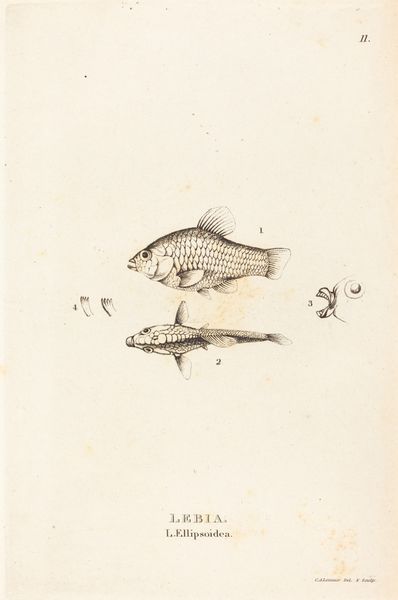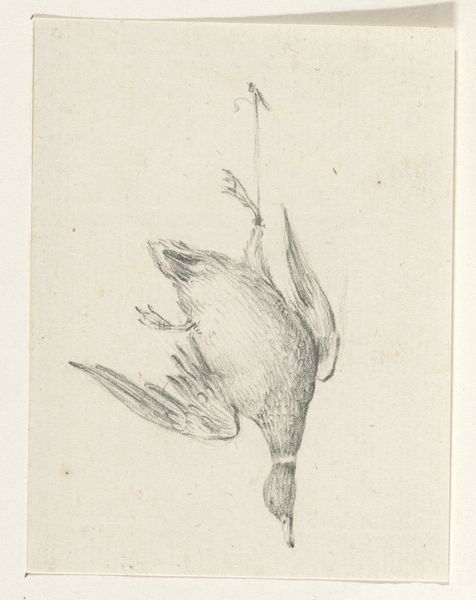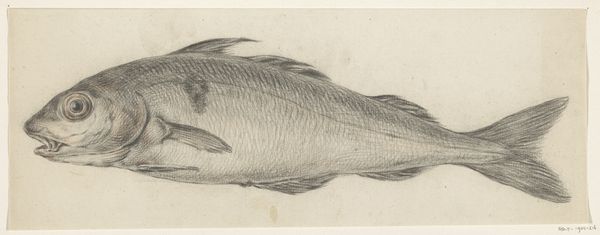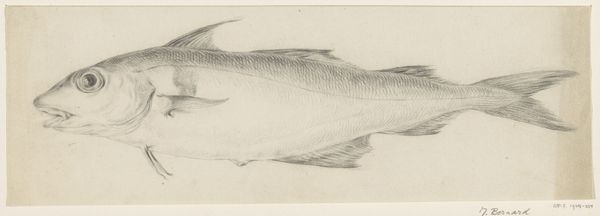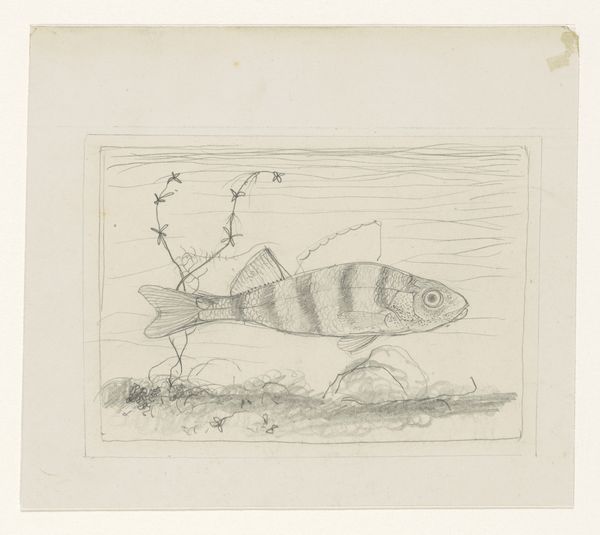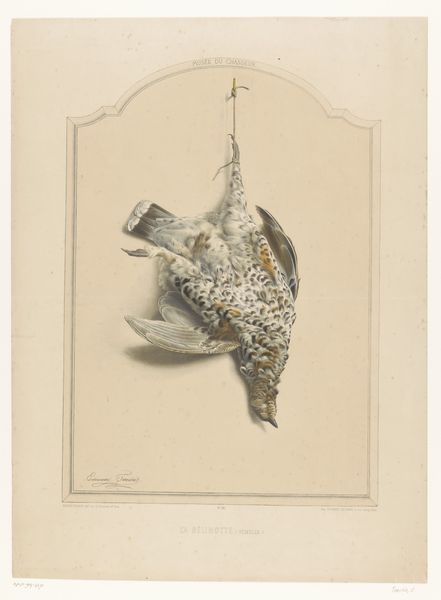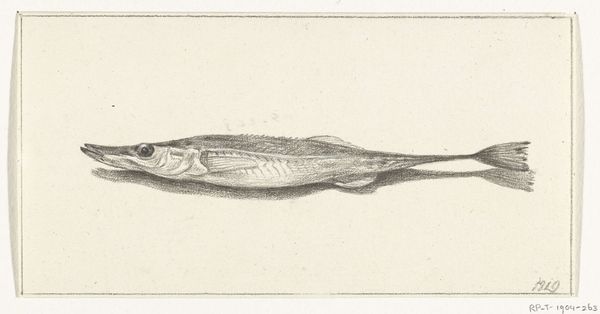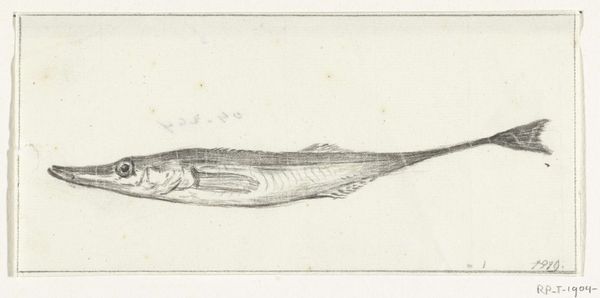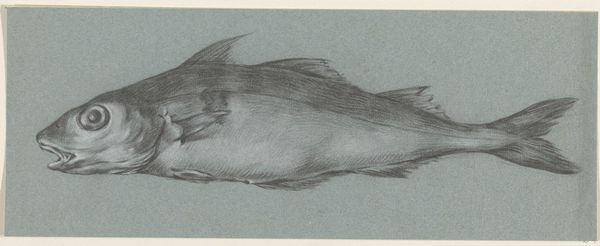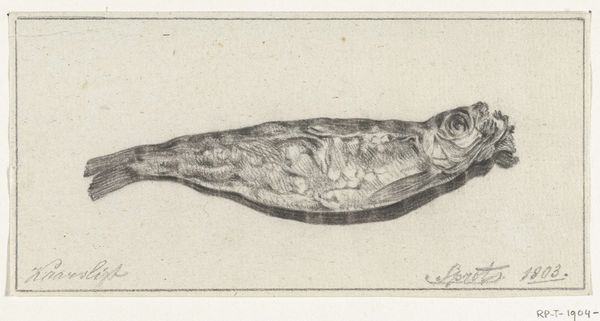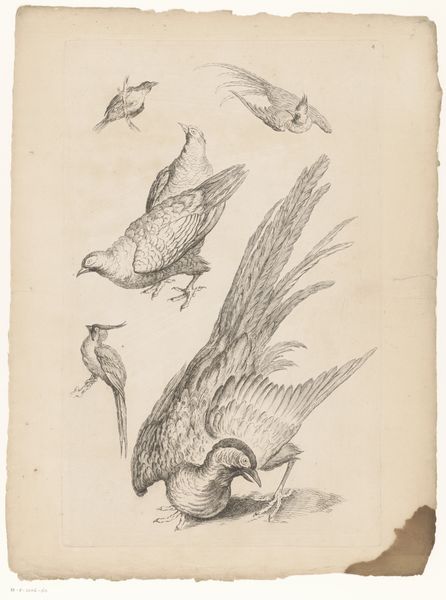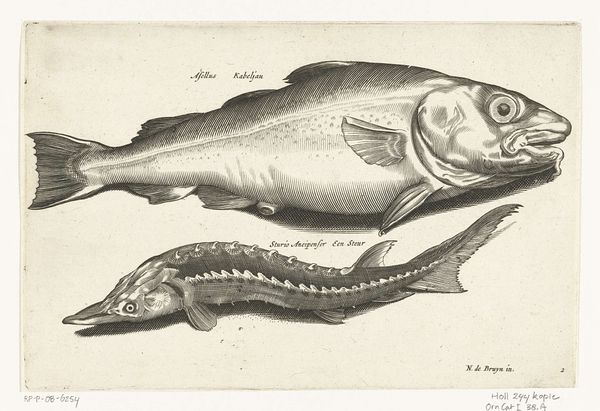
drawing, paper, pencil
#
pencil drawn
#
drawing
#
pencil sketch
#
paper
#
pencil drawing
#
pencil
#
sketchbook drawing
#
academic-art
#
realism
Dimensions: height 222 mm, width 185 mm
Copyright: Rijks Museum: Open Domain
Curator: Look at these Drie kruiselings gerangschikte visjes or Three Crosswise Arranged Small Fish by Jean Bernard dating back to the late 18th or early 19th century. It is a drawing done in pencil on paper. Editor: They look so sad! Incredibly lifelike but with such dejected expressions. And arranged so formally almost like a heraldic crest... if heraldic crests featured fish. Curator: What strikes me is the process. The artist carefully renders the texture and form of the fish with precise pencil strokes. It reflects a system of artisanal labor intended for study more than say…decoration. Consider how these sketches served the era’s burgeoning natural sciences. Editor: True, there's a studiousness to it, but it's more than just anatomical accuracy, don't you think? There’s something poignant, perhaps, in the delicate rendering. The almost fragile quality of the medium highlights the ephemerality of the subject. Curator: Agreed. And viewing the scale and detail, you get an intense feel for paper as a valued, constrained commodity then. The careful layering creates shadow depth with subtle material economy. Each mark and minimal sizing decision mattered because it represented labor. Editor: It makes you wonder, too, about Bernard's relationship to his subjects. Fish as both sustenance and objects of study…almost a tiny monument to the everyday, elevating humble creatures. Curator: That elevation feels bound to production capacities, literally a class marker, of artistic practices and academic goals for that time. Fish becomes a lens onto labor stratification in early scientific communities. Editor: Hmm… well, regardless, I find that kind of deep seeing infectious! The simplicity here encourages noticing things we might usually ignore. It is a gift I believe. Curator: I think examining material and labor clarifies appreciation for how “gifts” occur inside systems. It highlights the mechanics, which is, at least for me, a true joy.
Comments
No comments
Be the first to comment and join the conversation on the ultimate creative platform.
